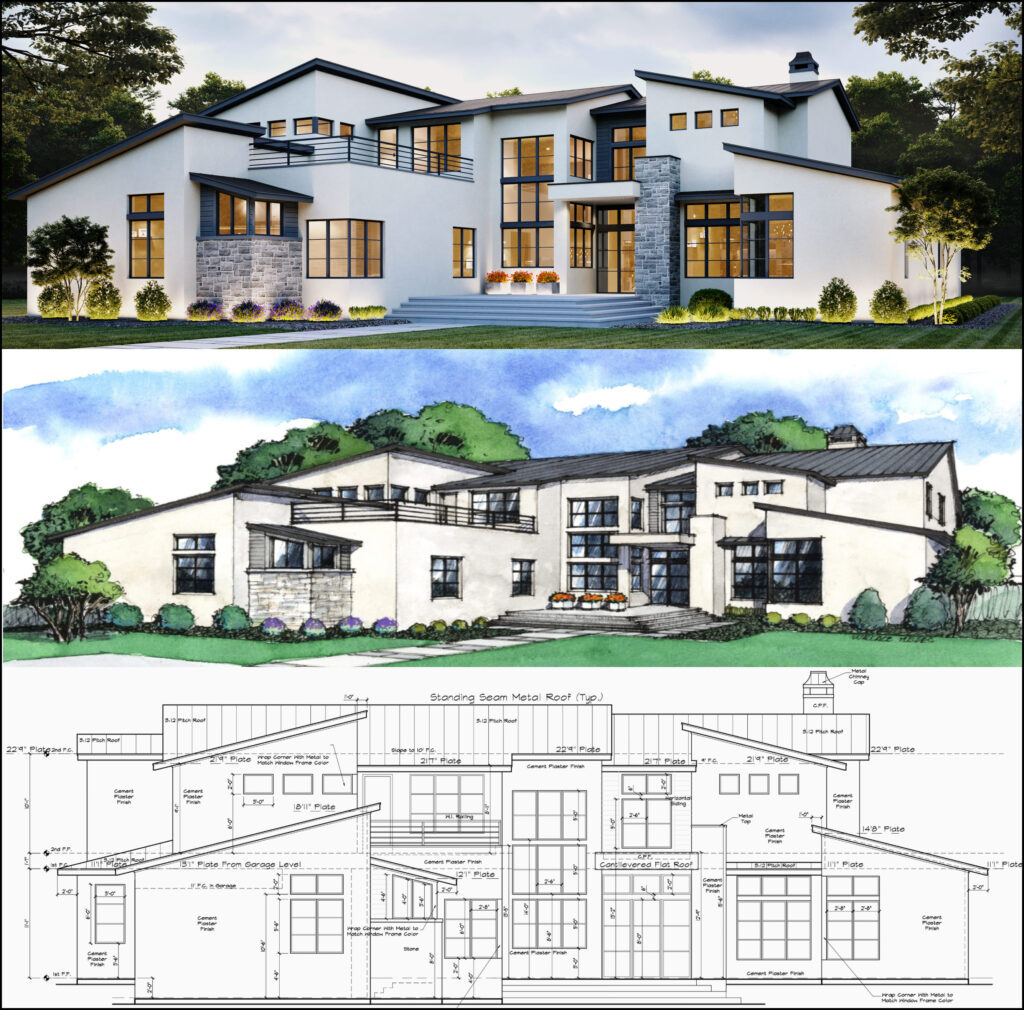A Thorough Review of Architectural Styles and Their Influence on Modern City Planning and Development
Architectural styles have long functioned as a mirror to the societal values and technological developments of their time, playing a critical duty fit modern city preparation and development. From the splendour of Neoclassicism to the utilitarian method of Brutalism, each style has introduced unique concepts that affect city aesthetics and functionality. As contemporary obstacles emerge, consisting of sustainability and community requirements, comprehending these historical frameworks becomes essential. The resulting discussion not just notifies future style practices yet additionally increases essential concerns about the equilibrium in between heritage and development in our developing urban landscapes.
Historical Introduction of Architectural Designs

As societies transitioned via the Middle Ages, Gothic design arised, characterized by its verticality and complex describing, matching the spiritual goals of the era. The Renaissance marked a revival of timeless suitables, merging art and style in innovative manner ins which influenced subsequent designs throughout Europe.

Today, architectural designs continue to advance, driven by globalization and sustainability problems, showing a vibrant interaction in between heritage and advancement. This historical review emphasizes the significance of style as a mirror of societal advancement and as a stimulant for city development.
Trick Architectural Styles Explained
The variety of architectural styles shows the myriad influences that shape our built setting, each symbolizing distinct attributes and cultural significances. Trick building styles consist of Classical, Gothic, Baroque, Modernism, and Postmodernism, each standing for distinct historical contexts and aesthetic philosophies.
Timeless architecture, rooted in old Greece and Rome, emphasizes symmetry, proportion, and using columns (cda architects). On the other hand, Gothic architecture, thriving between Ages, is identified by sharp arches, ribbed vaults, and flying buttresses, developing an ethereal high quality in sanctuaries. Baroque architecture, arising in the 17th century, is noted by grandeur, elaborate embellishment, and a vibrant interplay of light and shadow
Modernism, which obtained momentum in the very early 20th century, prioritizes feature over kind, making use of brand-new materials like steel and glass to produce minimal frameworks. Postmodernism, reacting versus Related Site the austerity of Modernism, welcomes eclecticism and historical recommendation, frequently including spirited components and irony.

Effect On Urban Planning
In forming the growth of cities, building designs significantly influence metropolitan preparation decisions. The selection of building style typically determines the appearances, functionality, and general character of city settings.
Additionally, architectural styles can influence zoning laws and land make use of plans. Urban planners have to think about the dominating architectural patterns when designing areas, guaranteeing that new advancements balance with existing frameworks. This consideration cultivates natural city landscapes and boosts neighborhood identification.
The execution of specific architectural designs can additionally affect socioeconomic elements within a city. Premium modern styles may bring in wealthy residents and companies, leading to gentrification, while much more inexpensive housing options might prioritize practical and sustainable layouts to fit diverse populations. cda architects. Ultimately, the interplay between building designs and metropolitan preparation develops vibrant cities that show both historical context and contemporary needs, shaping the lived experiences of their occupants
Sustainability and Modern Style
Building designs play an essential role in resolving contemporary obstacles, especially in the world of sustainability. As urban locations expand and environmental problems increase, modern design significantly accepts lasting design principles that focus on energy performance, source preservation, and minimal eco-friendly impact.
Contemporary architectural activities, such as biophilic design and eco-friendly style, supporter for structures that balance with their environments, making use of natural materials and advertising biodiversity. These designs frequently integrate eco-friendly power sources, such as solar panels and wind turbines, to minimize dependence on fossil fuels and lower carbon footprints.
Additionally, the assimilation of Clicking Here advanced technologies, such as smart building systems, improves power monitoring, maximizing source use while ensuring resident comfort. Ingenious water administration methods, consisting of rain harvesting and greywater recycling, more add to lasting city settings.
Especially, sustainability expands past ecological problems; it incorporates social and financial measurements too. By promoting neighborhood well-being and promoting inclusivity, modern building designs line up with sustainable development goals. The advancement of building practices proceeds to form durable cities that not only fulfill the requirements of the present but additionally secure the future for generations to come.
Neighborhood Engagement in Layout
Neighborhood engagement in layout works as a vital bridge between architects and the populaces they serve, ensuring that the developed atmosphere mirrors the requirements and goals of its users. This joint process invites neighborhood members to contribute their understandings and preferences, promoting a sense of possession and duty towards recommended you read the spaces they live in.
Reliable neighborhood involvement uses different techniques, such as workshops, surveys, and public online forums, to gather varied perspectives. These strategies help with a two-way discussion, allowing designers to recognize regional contexts while encouraging locals to articulate their concerns and wishes. This inclusivity not just enhances the style top quality however additionally promotes social equity by attending to the unique difficulties encountered by marginalized groups.
Additionally, community interaction can bring about ingenious options that might not arise in a conventional layout process. By incorporating local understanding and social values, engineers can create spaces that resonate even more deeply with users, improving use and sustainability. Ultimately, focusing on community interaction in layout processes leads to settings that nurture social communications, support wellness, and reinforce neighborhood connections, thereby playing an essential duty fit modern urban landscapes.
Final Thought
Architectural styles have actually exceptionally influenced modern city planning and growth, showing developing cultural and technical contexts. As cities continue to grow and adjust, the continuous dialogue in between building heritage and modern design principles will remain essential in creating inclusive, vibrant areas that improve high quality of life and advertise social equity.